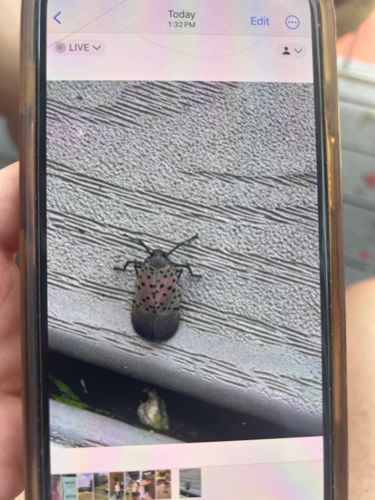Spotted Lanternfly
Scientific Name: Lycorma delicatula
Order & Family: Order: Hemiptera, Family: Fulgoridae
Size: Adults typically measure about 2.5 cm (1 inch) in length and 1.2 cm (0.5 inches) in width. Nymphs vary in size from a few millimeters in early instars to about 1.2 cm in the final instar.

Natural Habitat
Native to China, India, and Vietnam, the Spotted Lanternfly has become an invasive species in other parts of the world, including South Korea, Japan, and the United States (primarily in the eastern and mid-Atlantic states). They are found in vineyards, orchards, forests, and suburban areas, wherever host plants are abundant.
Diet & Feeding
The Spotted Lanternfly is a planthopper that feeds on the sap of a wide variety of plants, including trees, vines, and crops. It uses its piercing-sucking mouthparts to extract sap. Preferred hosts include Tree of Heaven (Ailanthus altissima), grapevines, maples, walnuts, and fruit trees.
Behavior Patterns
Spotted Lanternflies undergo incomplete metamorphosis, having three nymphal instars before becoming adults. They are known for their ability to jump and their gregarious feeding habits. Adults tend to aggregate in large numbers on host plants, particularly in late summer and fall.
Risks & Benefits
Potential risks: The Spotted Lanternfly poses a significant threat to agriculture and forestry. Its feeding can weaken and kill host plants, leading to severe economic losses in vineyards, orchards (grapes, apples, peaches, etc.), and timber industries. They also excrete large amounts of 'honeydew,' a sugary substance that promotes the growth of sooty mold, which can cover plants, outdoor furniture, and vehicles, reducing photosynthesis and aesthetics. Potential benefits: There are no known benefits of the Spotted Lanternfly in its invasive range; it is considered a destructive pest.
Identified on: 8/9/2025